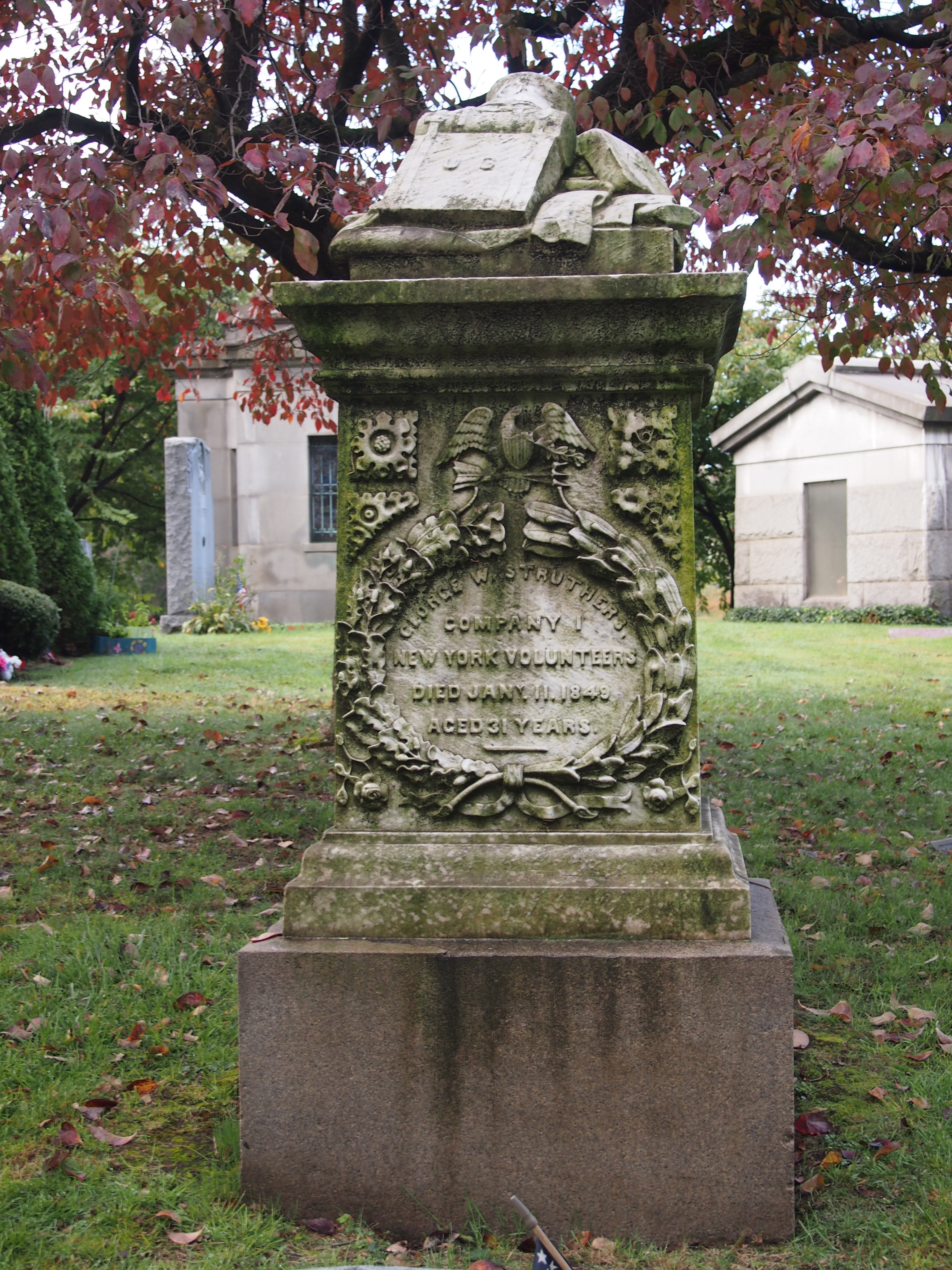Has it been five years since I first visited Green-Wood Cemetery in Brooklyn for the first time? So it has. Green-Wood Cemetery remains one of the prettiest I’ve been to, even in drizzly early spring. No doubt the fall colors, as I saw them five years ago, are returning now.
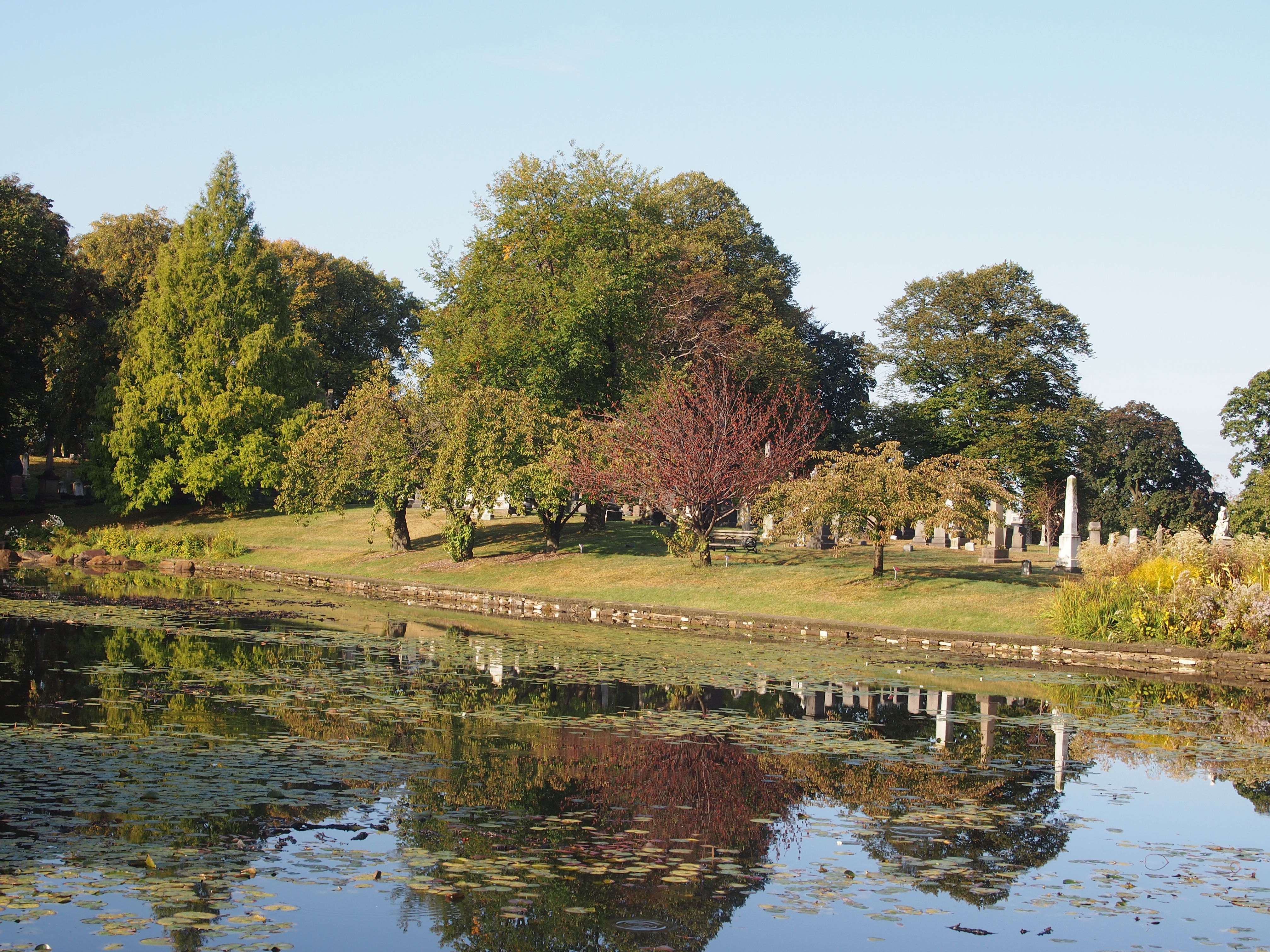 The main pond was a particularly lovely spot. This is the cemetery’s chapel, a 1911 Warren & Wetmore design; that firm also did Grand Central Terminal, among other things.
The main pond was a particularly lovely spot. This is the cemetery’s chapel, a 1911 Warren & Wetmore design; that firm also did Grand Central Terminal, among other things.
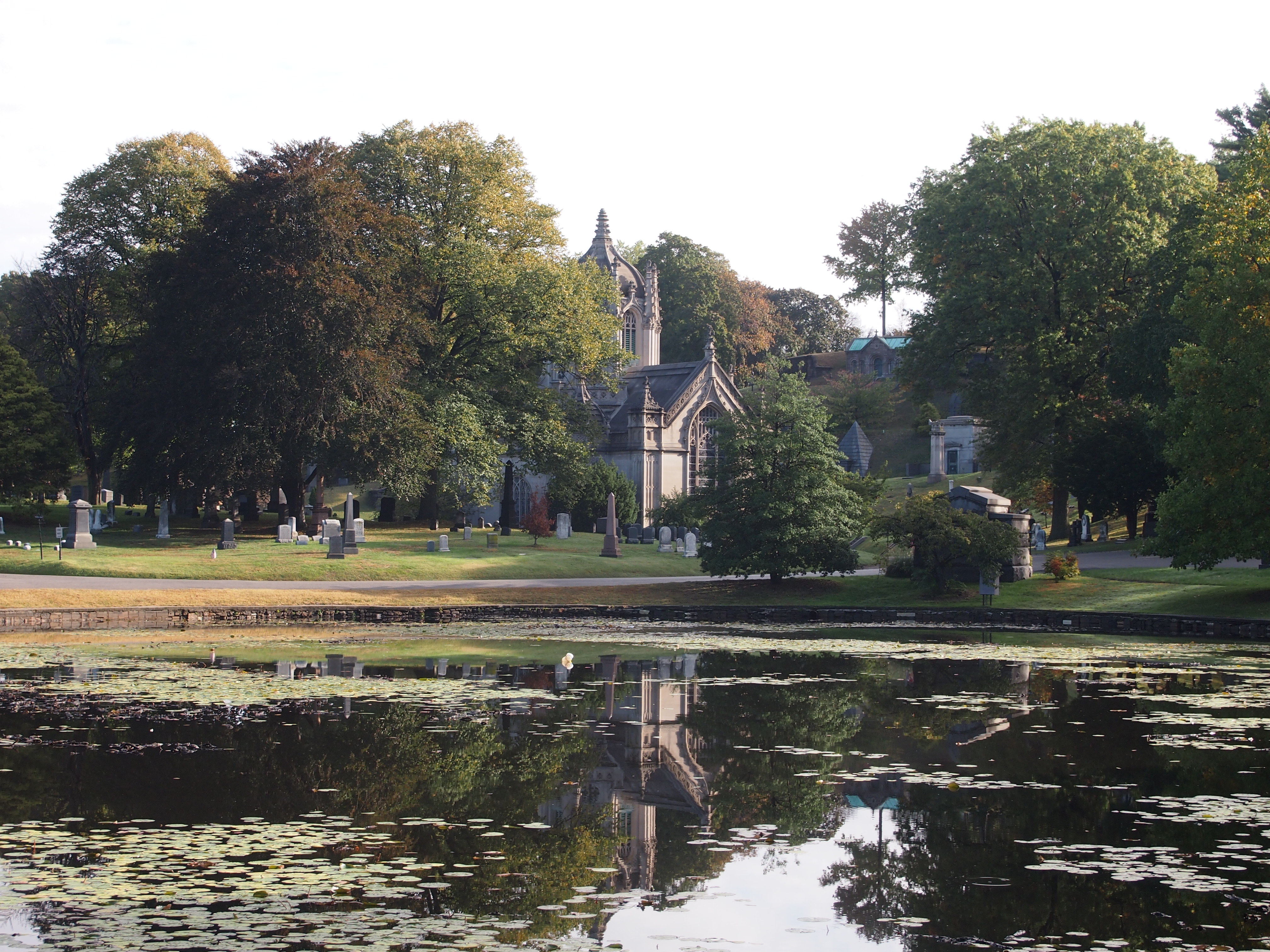 This is Peter Brunjes, looking quite 19th century.
This is Peter Brunjes, looking quite 19th century.
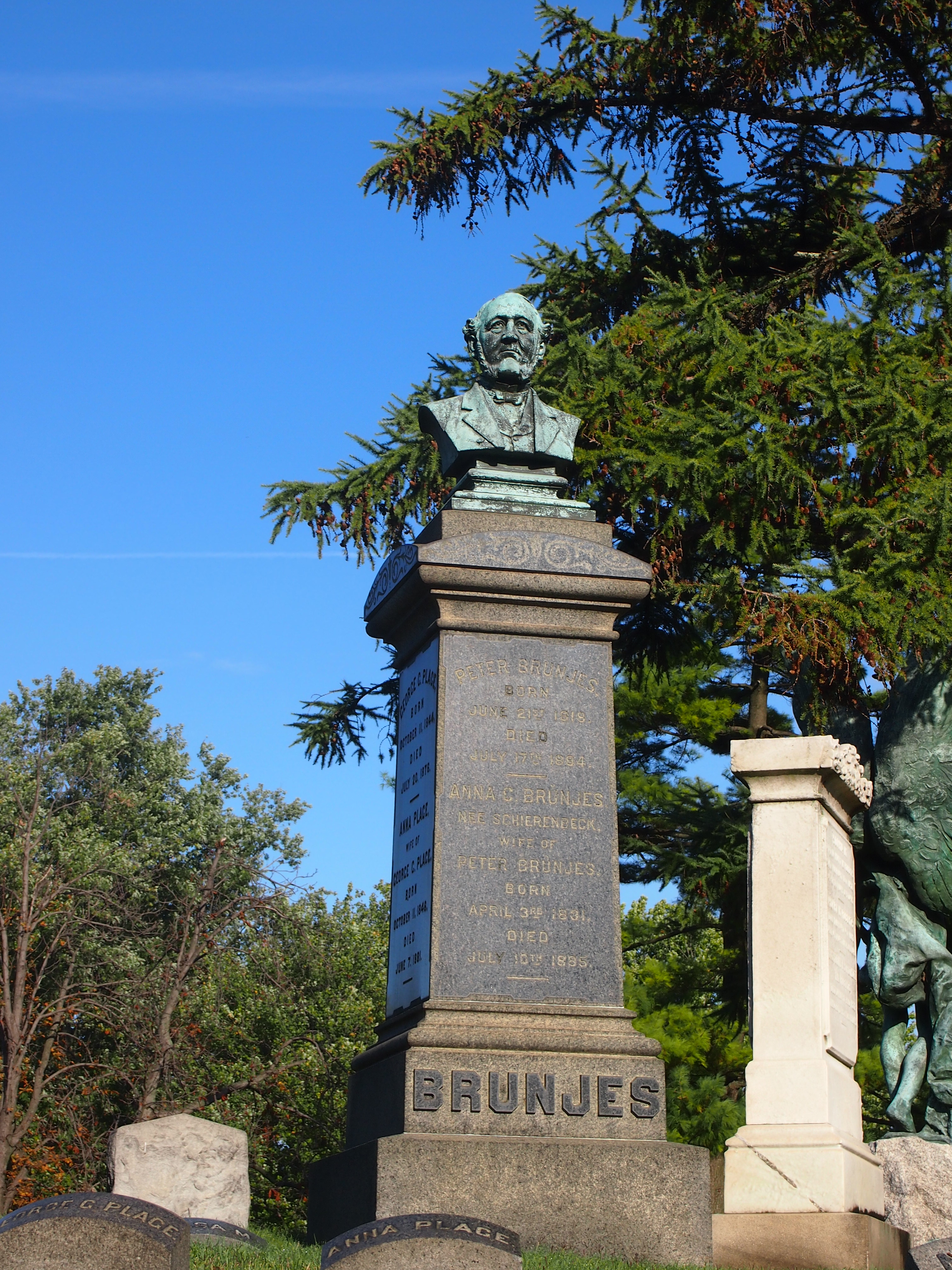 A casual search — “Peter Brunjes,” “Peter Brunjes New York,” “Peter Brunjes Green-Wood” — reveals nothing. Looks like he was a respectable citizen, even locally prominent, just to judge by his stone, which is probably the effect his family wanted. Sic transit gloria mundi, dude. Think you will be remembered? You will not. But so what?
A casual search — “Peter Brunjes,” “Peter Brunjes New York,” “Peter Brunjes Green-Wood” — reveals nothing. Looks like he was a respectable citizen, even locally prominent, just to judge by his stone, which is probably the effect his family wanted. Sic transit gloria mundi, dude. Think you will be remembered? You will not. But so what?
The main entrance, dating from the 1860s, seen in a different light than last year.
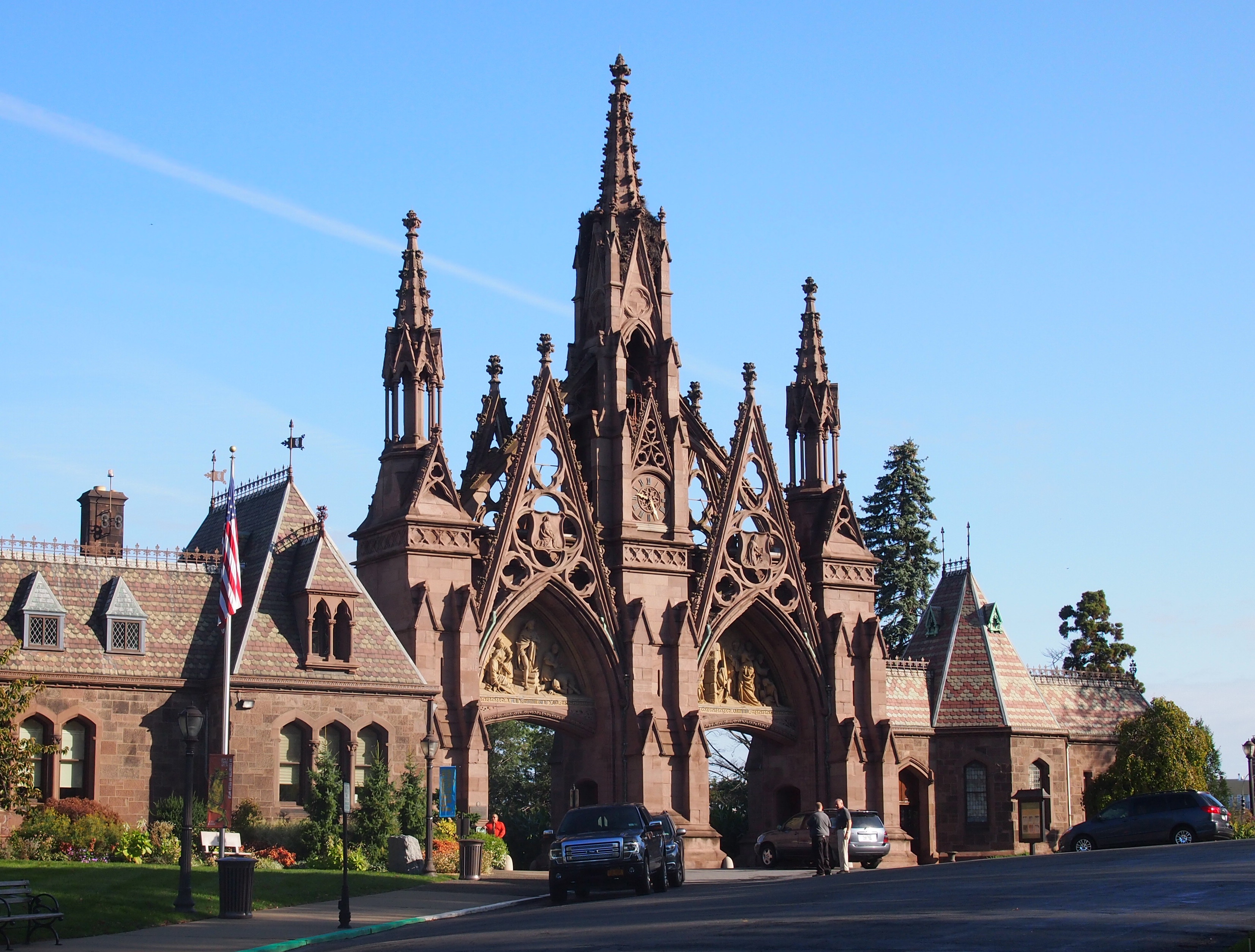 It’s a design by Richard Upjohn, who’s known for his Gothic churches.
It’s a design by Richard Upjohn, who’s known for his Gothic churches.
The stone of one George Struthers, died 1849, aged 31 years.
From Our Firemen, The History of the NY Fire Departments [all sic]: The “Harrington Guard” was a volunteer organization from Union Engine Company No. 18, and Henry Wilson was its captain. This volunteer company was in existence for a number of years, and one act while Mr. Wilson was in command should not go unrecorded. We allude to their noble conduct toward the first of the New York Volunteers who died after that regiment returned from the Mexican War.
“The late Sherman Brownell was called upon to deliver the address at the dedication of a monument placed in Greenwood by the Harrington Guard. That gallant fellow George Struthers was one of the first to enroll his name in Company 1 of the first regiment of New York State Volunteers.
“With them he went to Mexico, and remained among them until disbanded. He was one of the comparatively small number of the originals of the regiment that returned, and, although he escaped the ravages of the battlefield and returned to his friends, he was, like most of his companions, prostrated with the climate and exposure.
“He found, by disease contracted in Mexico, that he was fast failing. He went to the hospital, where his friends gave him all the attention that could be paid him. After remaining in the hospital for some time, he was called from his sufferings on earth.”
